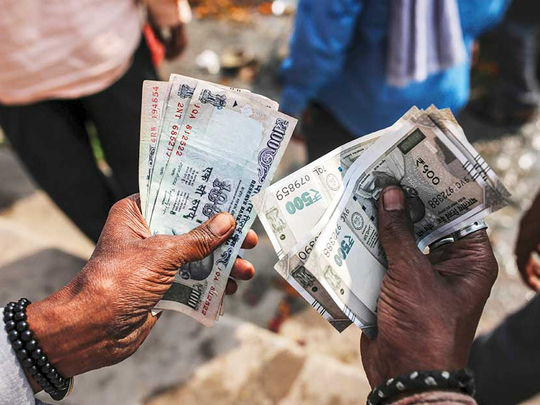
Mumbai: Don’t let the rupee’s strength fool you, strategists say. The rally that boosted the currency to the strongest in 32 months will probably be short-lived.
The rupee is facing headwinds as elevated energy prices threaten to increase inflation and worsen public finances in a nation that imports most of its oil needs. Traders are also bracing for higher government spending as Prime Minister Narendra Modi is set to take measures in the February budget to revive an economy that’s forecast to grow at the slowest pace in four years.
How Modi fares in reining in the fiscal deficit while seeking to jump-start activity may determine the currency’s direction for the remainder of the year, analysts say.
“The budget could well set the tone for the rupee in 2018,” said Aditya Pugalia, Dubai-based director of financial markets at Emirates NBD PJSC, the second most-accurate forecaster in Bloomberg’s quarterly rankings. “A slip-up on the deficit could add a layer of uncertainty.”
Emirates NBD predicts the rupee will weaken to 65 per dollar by the end of March. Mizuho Bank Ltd., the third-best forecaster in Bloomberg’s survey, sees it depreciating to 65.60, while the median estimate in a Bloomberg survey is 64.50. The rupee advanced to 63.2463 on January 8, the strongest since April 2015. It rose 0.3 per cent Monday to 63.4175.
The forecasts mark a turnaround in sentiment. The rupee strengthened in 2017 for the first time in seven years as slow inflation, stable commodity prices and a slew of policy reforms lured about $30 billion (Dh110 billion) of foreign inflows into India’s stocks and bonds.
Target exceeded
A surge in oil prices to a three-year high and slowing economic growth has clouded the picture. The budget deficit exceeded the target for fiscal year 2018 by the end of November, while inflation accelerated to the quickest pace in 17 months in December, data showed Friday.
The weak figures have taken their toll on the sovereign bond market, where yields have risen for five straight months.
“A critical point is that economic fundamentals coming into anti-Goldilocks conditions may diminish the rupee’s allure, accounting for some — but not a brutally alarming — pullback,” said Vishnu Varathan, head of economics and strategy at Mizuho in Singapore. The rupee’s strength is more due to a weak dollar and it’s susceptible to some moderation, he said.
Rupee bears also have history on their side. Recent advances in the currency, when not backed by an improving economy, have often led phases of weakness, Kotak Securities Ltd. says.
Elevated commodity prices “are not playing in the rupee’s favour,” said Anindya Banerjee, an analyst at the company in Mumbai. “They are creating a negative narrative, with concerns about growth and higher deficit only adding to the worries.”












